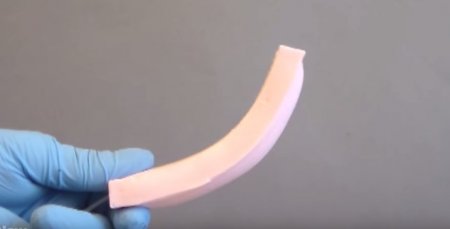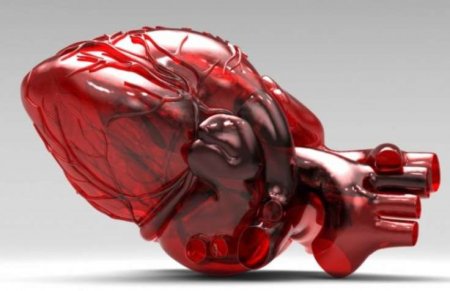The elastomers can be the basis for the artificial heart
Although the problem of the heart transplant from one living being to another medicine solved over half a century ago, the problem of creating an artificial heart is still relevant. The fact that the transplanted heart makes the body immune response, which is why it tends to tear a new body. As a result, doctors are allowed to operate on drugs that suppress the immune system, but with them the patient becomes highly vulnerable even to those bacteria and viruses that usually would not be able to threaten his life.
Unfortunately, many of the known materials are not well suited for the creation of man-made heart. Strong and compact muscle, which could be reduced more than once per second, for many years in a row experiencing huge mechanical loads - is artificially created by the heart must be very durable. In addition, our body often reacts to an inflammatory process in the implantation of metal or just too solid objects, and inflammation in the area of ??the heart muscle can be extremely dangerous to humans.
The most logical way out of this difficult situation is the use of polymers having the desired flexibility and do not cause inflammation. But how to make them work in the manner of muscles - constantly contract and relax? Previously you tried to use a flat plastic counterparts muscles that shorten and lengthen under the influence of an outside air pump. Gas inside of them spread through the tubes, often had a complex shape. But such '' pneumatic muscles '' had a number of limitations: To work correctly, they need to have a nearly flat shape (aka tubes required a complex internal skeleton), that for a workable artificial heart is hardly acceptable.
Shepherd Group decided to use open cell elastomers. Within these elastic polymers, there is a whole network of interconnected '' vessels '', which in many respects makes them look like the fabric of the heart. According to him in the elastomer is directed gas whose pressure forces the plastic is lengthened, then roll up.
At the moment, Shepard and his colleagues have tested a simplified model of a two-chamber heart of elastomers. But while their experiment showed quite promising results. In the next step the researchers hope to simulate a four-chambered heart, the same complex as a healthy person.
Unfortunately, many of the known materials are not well suited for the creation of man-made heart. Strong and compact muscle, which could be reduced more than once per second, for many years in a row experiencing huge mechanical loads - is artificially created by the heart must be very durable. In addition, our body often reacts to an inflammatory process in the implantation of metal or just too solid objects, and inflammation in the area of ??the heart muscle can be extremely dangerous to humans.
The most logical way out of this difficult situation is the use of polymers having the desired flexibility and do not cause inflammation. But how to make them work in the manner of muscles - constantly contract and relax? Previously you tried to use a flat plastic counterparts muscles that shorten and lengthen under the influence of an outside air pump. Gas inside of them spread through the tubes, often had a complex shape. But such '' pneumatic muscles '' had a number of limitations: To work correctly, they need to have a nearly flat shape (aka tubes required a complex internal skeleton), that for a workable artificial heart is hardly acceptable.
Shepherd Group decided to use open cell elastomers. Within these elastic polymers, there is a whole network of interconnected '' vessels '', which in many respects makes them look like the fabric of the heart. According to him in the elastomer is directed gas whose pressure forces the plastic is lengthened, then roll up.
At the moment, Shepard and his colleagues have tested a simplified model of a two-chamber heart of elastomers. But while their experiment showed quite promising results. In the next step the researchers hope to simulate a four-chambered heart, the same complex as a healthy person.

